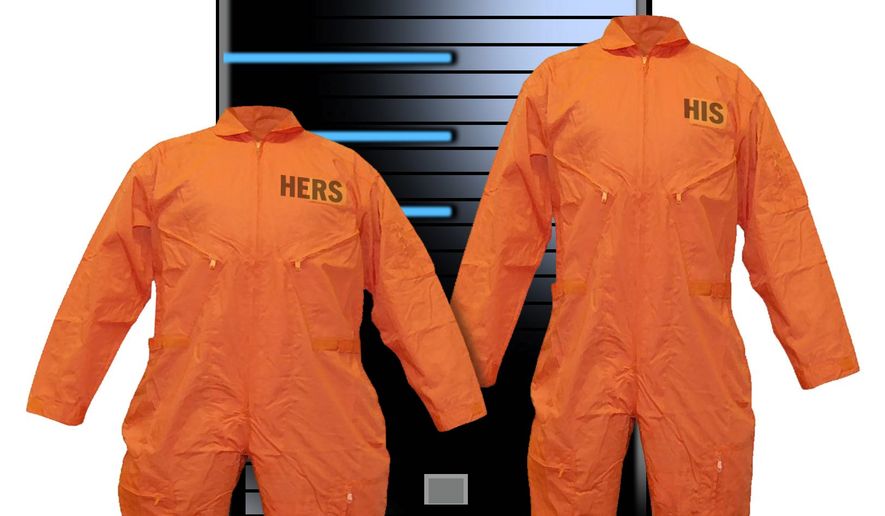OPINION:
In the unfolding political and legal drama surrounding Hillary Clinton and her private server, one name has been conspicuously missing.
Bill Clinton.
There has been scant mention of the former president’s possible role and potential exposure in the server/classified material controversy, which now represents an existential threat to Mrs. Clinton’s presidential ambitions. But perhaps his role may be more central that we’ve been led to believe.
Rather than simply focusing on Mrs. Clinton’s actions as secretary of state, the FBI investigation may be proceeding along two tracks: his and hers. So far, two areas of focus have been mentioned.
One is the possible abuse of highly sensitive information by Mrs. Clinton through her use of a private, unsecured server. The other involves possible violations of public corruption law: whether she and Mr. Clinton used her position as secretary of state to further the interests of the Clinton Foundation. When these two apparently separate tracks are looked at conjointly, two major questions arise concerning Mr. Clinton.
First, did Mr. Clinton, in fact, own, pay for and house on his property the server used by Mrs. Clinton while she was secretary of state? And second, did he touch, read, see and/or use any of the classified documents that appeared on that server, and if so, did he have the appropriate clearances and approval?
Let’s take a step back. In March 2015, when the story first broke that as secretary, Mrs. Clinton had kept a private server through which all of her official government business passed, the Associated Press reported that the server was traced back to an Internet service registered to the Clinton home in Chappaqua, N.Y.
At her initial press conference on the matter that month, Mrs. Clinton said the server that housed her emails while she was secretary was set up for Mr. Clinton.
“The system we used was set up for President Clinton’s office,” she said.
She added, “It was on property guarded by the Secret Service. So, I think that the use of that server, which started with my husband, certainly proved to be effective and secure.”
Further, in mid-March 2015, a Democratic source familiar with the arrangement told Fox News that Mr. Clinton paid out of his own pocket for the email server that was used by Mrs. Clinton.
At the time, aides to Mr. Clinton were quick to point out that while he did not use email, they did, and wanted a secure system to communicate with one another about his “speeches and business dealings.” Business dealings that undoubtedly involved Clinton Foundation work.
A Democratic source also confirmed a Wall Street Journal report that Mrs. Clinton’s aides approached her husband’s aides before she became secretary in 2009 to request shared access to the server. The Journal reported that Mr. Clinton’s aides expressed concerns that adding her would make it a juicy target for hackers. They added her to his system anyway.
Since then, Mrs. Clinton’s defenses have been all over the map. She first claimed unequivocally that “there is no classified material.” When that was shown to be false, she claimed that she had neither “sent nor received” anything “marked” classified. We now know that she had ordered her deputy, Jake Sullivan, to remove the classification markings on at least one document and send to her “nonsecure.” As I indicated in this column last summer, Mr. Sullivan may be cooperating with the FBI. If so, he could be revealing that Mrs. Clinton ordered her staff to routinely remove classification markings and transfer them via her unprotected server.
Here, however, is the main point: The moment she established and began using her own server, she assumed full responsibility for everything that occurred on it — including the possibly illegal transfer of top secret and classified material. Once classified material hits a computer system, the entire system — including the hardware — becomes classified.
And while her constantly changing claims that she did not send classified material and that material she received was not “marked” classified might constitute some sort of meager defense if she had used the government’s secure system, they appear irrelevant once she chose to use her own system. It would seem that she, and possibly he, are fully responsible for everything that occurred on it, period.
Again, Mr. Clinton paid for the server out of his own pocket, his team used it for foundation work, and it was stored on his property. It would be difficult for him to claim ignorance about the server and what was passing through it.
Does he, as owner and overseer, incur any criminal liability for illegal activity that took place on or through it?
Further, if Mr. Clinton touched, read, saw, and/or used any of the classified material, does he have additional criminal exposure?
Finally, if, for example, she possessed classified material on the server about a foreign country or entity and that information was used to benefit them personally and/or their foundation, might both Clintons be implicated in the broader security violations?
While the public focus is currently solely on Mrs. Clinton, perhaps down the line there may be two possible criminal referrals from the FBI: hers and his. And perhaps the threat of a criminal referral against Mr. Clinton might be used as leverage to extract concessions from her, say, withdrawing from Democratic race or, more sinisterly, ensuring her silence about the shady machinations of the Obama administration.
At that point, we may finally learn why the Clintons seem to have been willing to expose America’s greatest national security secrets.
• Monica Crowley is editor of online opinion at The Washington Times.




Please read our comment policy before commenting.